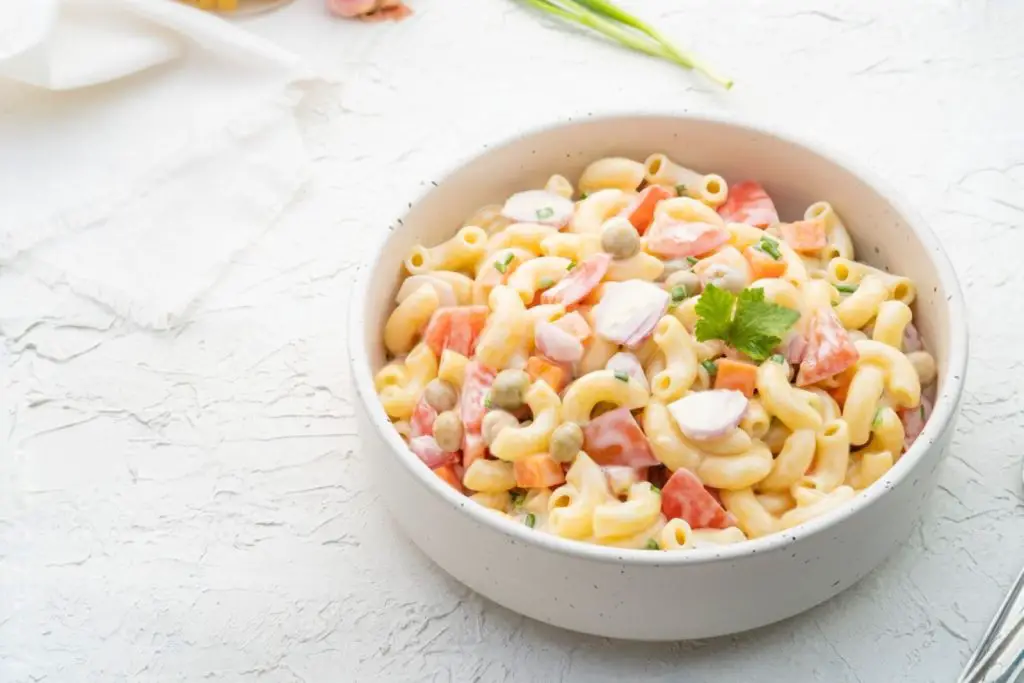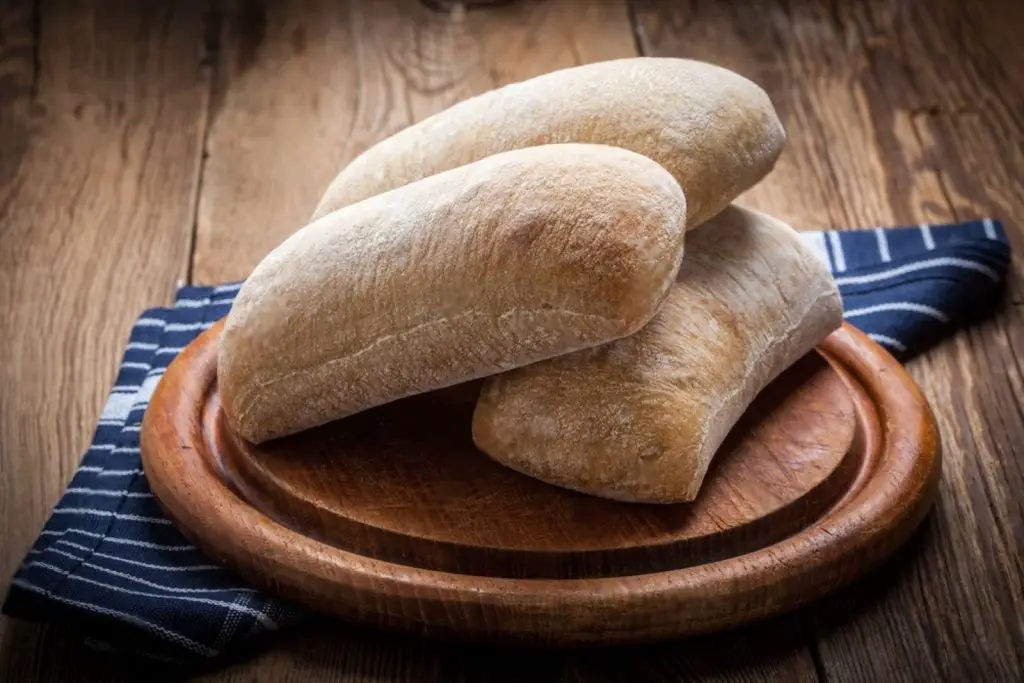
Ratatouille, a classic Provençal vegetable stew, is a celebration of the vibrant flavors and colors of the Mediterranean region. This wholesome dish combines a delightful assortment of fresh vegetables, including tomatoes, eggplants, zucchini, bell peppers, and onions, simmered together with fragrant herbs like thyme and basil. The result is a harmonious melange of tastes and textures, perfectly showcasing the natural goodness of each ingredient. Ratatouille’s popularity has transcended borders, becoming a beloved dish in kitchens worldwide. However, as the abundance of fresh summer produce wanes, freezing this delectable stew becomes a fantastic way to preserve its essence and indulge in its heartwarming flavors long after the season has passed. In this guide, we will explore the art of freezing ratatouille, ensuring that its taste and character are lovingly maintained, ready to transport you to the sunny landscapes of Provence with each delightful spoonful, even during the chilliest months of the year.
Here are the simple steps to freeze ratatouille:
Step 1: Prepare your Fresh Ratatouille
Emphasis is on starting the freezing process with freshly made ratatouille that has cooled down to room temperature. Let’s break down the reasons behind each part of this instruction:
- Freshly made ratatouille: When you prepare ratatouille, it’s best to freeze it as soon as possible after cooking. Freshly made ratatouille retains its optimal taste, texture, and nutritional value. The vegetables used in ratatouille are at their peak quality and flavor when freshly cooked. Freezing the dish promptly helps preserve these desirable attributes.
- Cooled down to room temperature: It’s important to allow the ratatouille to cool down to room temperature before freezing. Placing hot food directly in the freezer can lead to uneven freezing and potentially raise the temperature of the freezer, affecting the safety of other frozen items. Cooling the ratatouille also prevents condensation from forming inside the storage container, which could result in freezer burn or compromise the dish’s quality.
- Start the freezing process at peak freshness: As mentioned earlier, the flavors and textures of ratatouille are at their best when freshly prepared. By freezing the dish at its peak freshness, you lock in those wonderful tastes and aromas. If you wait too long before freezing, the quality of the ratatouille might begin to deteriorate, and it may not be as enjoyable when you eventually thaw and reheat it.
Emphasizes the importance of using freshly made ratatouille that has cooled down to room temperature before freezing. This ensures that the dish’s flavors, textures, and nutritional value are preserved, allowing you to savor the delightful taste of ratatouille even after it has been frozen and thawed.
Step 2: Choose the Right Containers
This step highlights the importance of selecting appropriate containers or bags to store the ratatouille for freezing. Let’s delve into the reasons and considerations behind this instruction:
- Freezer-safe containers or airtight freezer bags: When freezing ratatouille (or any food), it’s crucial to use containers or bags specifically designed for freezer storage. Freezer-safe containers are made of materials that can withstand low temperatures without becoming brittle or cracking. Airtight freezer bags are designed to prevent air and moisture from entering, which helps preserve the quality of the ratatouille during freezing.
- Material options: The article suggests three common options for freezer-safe containers: glass, plastic, or heavy-duty freezer bags. Glass containers are durable and allow you to see the contents, making it easier to identify the frozen ratatouille. Plastic containers are lightweight and come in various sizes, offering convenience and space-saving options. Heavy-duty freezer bags are flexible and ideal for storing individual portions, as they can be laid flat for efficient storage.
- Clean and dry containers: Before using any container or bag for freezing, it’s essential to ensure they are clean and completely dry. Residues or moisture can lead to the growth of bacteria or ice crystals, negatively impacting the ratatouille’s taste and safety. Properly cleaning and drying the containers eliminate this risk and maintain the integrity of the dish during freezing.
By using the right materials and ensuring the containers are clean and dry, you can prevent freezer burn, contamination, and other issues that may affect the ratatouille’s taste and texture. This step contributes to the overall success of the freezing process and ensures that the ratatouille remains delicious and safe for future consumption.
Step 3: Portion the Ratatouille
This step focuses on the importance of dividing the ratatouille into appropriate portion sizes before freezing. Let’s explore the reasons behind this instruction:
- Convenience for future needs: Portioning the ratatouille into individual or family-sized servings provides convenience for future meals. When you freeze ratatouille in smaller portions, you can thaw and reheat only the amount you need at a given time. This flexibility allows you to enjoy the dish without having to defrost the entire batch, making it suitable for various meal sizes or occasions.
- Easier thawing: Smaller portions of ratatouille thaw more quickly and evenly than a large container. When you need to use the ratatouille, you won’t have to wait as long for it to defrost, saving you time and making meal preparation more efficient. This is particularly beneficial when you’re in a hurry or have limited time to cook.
- Reduces food waste: Portioning the ratatouille helps minimize food waste. If you freeze the entire batch in one container, you might end up thawing more than you can consume, leading to potential leftovers that could go to waste. By portioning, you have better control over how much you defrost, reducing the likelihood of excess leftovers.
- Ideal for individual servings: If you live alone or are preparing ratatouille for one person, portioning allows you to freeze single servings, preventing the need to thaw more than necessary and ensuring you can enjoy the dish over multiple meals without any spoilage.
By dividing the ratatouille into suitable portion sizes, you can enjoy the dish whenever you desire without worrying about leftovers going unused or the hassle of defrosting more than you need. The result is a practical and efficient freezing process that complements your future meal planning and enjoyment.
Step 4: Fill the Containers or Bags
the process of transferring the ratatouille into the selected containers or bags for freezing, with an essential consideration to leave some space at the top. Let’s delve into the reasons behind this instruction:
- Transfer the ratatouille carefully: When filling the containers or bags with ratatouille, it’s important to do so with care to avoid spills or messes. Using a ladle or a large spoon can help ensure a smooth and controlled transfer of the dish into the storage containers.
- Choose appropriate containers: As mentioned, it’s crucial to use freezer-safe containers or airtight freezer bags. These containers are designed to withstand freezing temperatures without cracking or leaking, ensuring the ratatouille remains well-preserved during storage.
- Leave space at the top: Ratatouille, like many other liquids or dishes with high water content, expands when frozen. Leaving some space at the top of the container or bag allows room for expansion without the risk of the container bursting or leaking during freezing. Without this extra space, the ratatouille could exert pressure on the container, potentially damaging it or causing spills in the freezer.
- Prevent freezer burn: Leaving some space at the top also helps prevent freezer burn. Freezer burn occurs when moisture in the ratatouille is exposed to air, causing it to evaporate and leave dry patches on the surface. By minimizing the amount of air in the container, you can reduce the risk of freezer burn and maintain the quality of the ratatouille.
- Even distribution: When filling the containers or bags, aim for an even distribution of ratatouille. This ensures that each portion contains a balanced mix of vegetables and flavors, providing a consistent taste and experience when you later thaw and reheat the dish.
It guides you through the process of carefully transferring the ratatouille into your chosen containers or bags while leaving space at the top to accommodate expansion during freezing. By doing so, you promote efficient storage, prevent potential leaks or damage, and safeguard the quality of the ratatouille during freezing. Following this step ensures that your frozen ratatouille maintains its delicious taste and texture, ready to be enjoyed whenever you choose to savor it.
Step 5: Seal and Label
On securing the containers or bags properly and providing clear labeling for efficient freezer organization. Let’s explore the reasons behind this instruction:
- Secure sealing: Sealing the containers or closing the bags securely is essential to create an airtight environment inside. A proper seal prevents air from entering the container, which can lead to freezer burn or the degradation of the ratatouille’s taste and texture over time. An airtight seal also prevents odors from escaping and potentially affecting other foods in the freezer.
- Prevent freezer burn: As mentioned earlier, freezer burn occurs when moisture in the ratatouille evaporates due to exposure to air. By ensuring a tight seal, you significantly reduce the risk of freezer burn, keeping the ratatouille in optimal condition for an extended period.
- Maintain freshness: The airtight seal also helps preserve the freshness of the ratatouille by minimizing contact with oxygen. This preservation helps retain the flavors, colors, and nutritional content of the dish, making sure it tastes as delicious as when it was freshly made.
- Labeling with date: Labeling each container or bag with the current date using a waterproof marker is crucial for efficient freezer organization. By dating the ratatouille, you can easily keep track of how long it has been in the freezer. This information allows you to prioritize the usage of older ratatouille first, ensuring that you consume it within its recommended storage period.
- Reducing food waste: Proper labeling helps you avoid accidentally keeping frozen ratatouille for too long, reducing the risk of it becoming unsafe to consume. By knowing when the ratatouille was frozen, you can plan your meals accordingly and minimize food waste.
By emphasizes the importance of securely sealing the containers or bags to maintain an airtight environment for the ratatouille, preventing freezer burn and preserving its freshness. Additionally, the step stresses the significance of labeling each container or bag with the date of freezing to facilitate efficient freezer organization and help manage the rotation of frozen foods to minimize food waste. By following this step, you ensure that your frozen ratatouille remains in excellent condition and can be enjoyed with peace of mind, knowing it was properly stored and can be consumed within its recommended storage time.
Step 6: Store in the Freezer
This step focuses on the proper storage of the sealed containers or bags containing the ratatouille in the freezer. It also provides guidance on how to arrange the items for optimal freezing and efficient use of freezer space. Let’s explore the reasons behind this instruction:
- Proper freezing conditions: Once the ratatouille is sealed in the containers or bags, storing them in the freezer ensures that the dish is preserved at a consistently low temperature, preventing the growth of harmful bacteria. Freezing halts the natural spoilage process, extending the shelf life of the ratatouille.
- Single layer for faster freezing: Placing the containers or bags in a single layer initially allows for faster and more even freezing. When items are arranged in a single layer, the cold air in the freezer can circulate around them more efficiently, quickly lowering the temperature of the ratatouille to freezing levels. This rapid freezing helps maintain the quality of the dish by minimizing ice crystal formation, which can negatively impact texture and taste.
- Preventing sticking and easier handling: Freezing the ratatouille in a single layer reduces the likelihood of the containers or bags sticking together. This makes it easier to handle and remove individual portions when needed. It also allows you to access and use the frozen ratatouille more conveniently.
- Stacking to save space: Once the ratatouille is frozen solid, it can be stacked to save space in the freezer. Stacking allows you to make the most of the available freezer space, optimizing storage for other frozen items as well.
- Accessibility and organization: Stacking the containers or bags neatly helps with freezer organization. You can easily see the labeled dates and access specific portions when planning meals, making the process more organized and efficient.
By arranging them in a single layer initially for faster freezing and later stacking them once frozen, you ensure that the ratatouille maintains its quality and is easily accessible for future use. Following this step allows for efficient use of freezer space and ensures that the ratatouille remains in excellent condition, ready to be enjoyed whenever you desire a taste of this delectable Mediterranean dish.
How long can ratatouille last in the freezer?
Ratatouille can last in the freezer for about 3 to 6 months. Properly stored in airtight containers or freezer bags, it maintains its quality and taste for an extended period. To ensure optimal freshness, consume within the recommended time frame.
Step 7: Thaw and Reheat
It guides you on how to properly thaw and reheat your frozen ratatouille to enjoy it at its best. Let’s delve into the reasons behind each part of this instruction:
- Thawing in the refrigerator: Thawing ratatouille in the refrigerator is the safest method. This gradual thawing process allows the ratatouille to defrost evenly and at a controlled temperature, minimizing the risk of bacterial growth. Thawing in the refrigerator also maintains the dish’s texture and flavor, ensuring it tastes as delicious as when it was freshly made.
- Overnight thawing: Allowing the ratatouille to thaw overnight in the refrigerator is a convenient method. By planning ahead, you can have the ratatouille ready to reheat without any additional effort. This is particularly useful when you have specific meal times in mind or want to include the ratatouille in a recipe that requires it to be thawed beforehand.
- Defrost function on the microwave: If you need to thaw the ratatouille more quickly, you can use the defrost function on your microwave. However, it’s important to follow the microwave’s instructions and avoid overcooking the ratatouille during this process. Microwave thawing should be done carefully to maintain the dish’s quality.
- Gently reheating on low heat: When reheating the ratatouille, it’s best to do so gently over low heat. Slow reheating helps preserve the flavors and textures of the dish. Stirring occasionally prevents uneven heating and ensures that the ratatouille warms through evenly.
- Maintaining texture: The gentle reheating process in a saucepan helps preserve the ratatouille’s texture, preventing it from becoming mushy or overcooked. By reheating on low heat and stirring occasionally, you can enjoy the ratatouille with its original taste and consistency.
By following these guidelines, you ensure that the ratatouille is safely thawed and reheated, maintaining its delicious flavors and textures. Whether you choose the gradual refrigerator thawing method or the microwave defrost function, reheating gently in a saucepan over low heat will allow you to savor the delightful taste of the ratatouille, bringing the flavors of the Mediterranean right back to your plate.
Other related questions
Can you refreeze ratatouille?
Refreezing ratatouille is generally not recommended. Once thawed, the quality and safety of the dish may be compromised due to bacterial growth and changes in texture. It’s best to consume the ratatouille after thawing and reheating, rather than refreezing it to ensure the best taste and food safety.
How do I know if the ratatouille has gone bad after being frozen?
To determine if ratatouille has gone bad after being frozen, observe its appearance, smell, and taste. If the ratatouille has an unusual color, off-putting odor, or strange texture, it may indicate spoilage. Additionally, if it tastes sour or has an unpleasant flavor, it is likely no longer safe to consume. When in doubt, it’s best to discard the ratatouille to avoid any potential health risks.
Can I freeze ratatouille that contains tomatoes and peppers?
Yes, you can freeze ratatouille that contains tomatoes and peppers. Before freezing, allow the ratatouille to cool completely. Transfer it into airtight containers or freezer-safe bags, ensuring to remove excess air, and label with the date. It can be stored in the freezer for up to 3-4 months without significant loss of quality.
Can you freeze ratatouille that contains olive oil and herbs?
Yes, you can freeze ratatouille that contains olive oil and herbs. However, the texture and flavor of herbs may slightly change after freezing. To freeze, let the ratatouille cool, transfer it to airtight containers, leaving some space for expansion, and store for up to 3-4 months in the freezer.
Can you freeze ratatouille with both eggplant and zucchini?
Yes, you can freeze ratatouille with both eggplant and zucchini. Freezing may lead to slight texture changes in these vegetables, but the dish remains safe to consume. Allow the ratatouille to cool, place it in suitable containers, leaving room for expansion, and store it in the freezer.
Can I freeze homemade ratatouille with onions and garlic?
Certainly, you can freeze homemade ratatouille with onions and garlic. Both onions and garlic freeze well and retain their flavor when properly stored. Allow the ratatouille to cool, transfer it into airtight containers, leaving some space for expansion.
Are there any special considerations when freezing ratatouille with mushrooms?
Yes, there are special considerations when freezing ratatouille with mushrooms. Mushrooms have a high water content, which can affect their texture after freezing. To minimize this, sauté the mushrooms before adding them to the ratatouille, and avoid overcooking the dish.








